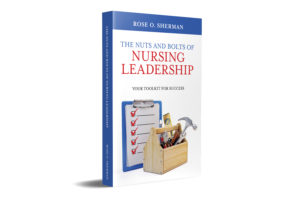By Rose O. Sherman, EdD, RN, NEA-BC, FAAN
Even when the current COVID surge begins to subside in 2022, the nursing shortage will continue for a very long time into the future. The number of nursing jobs is projected to escalate with the aging population. Nurses will have new career opportunities, and some of that work can now be done at home. The Department of Labor estimates that by the end of 2022, the US could be short more than one million nurses. We cannot quickly backfill these losses with new graduates.
In the current environment, every new idea is worth considering. A growing number of health systems now look at nurses who have retired or have been out of practice and seek ways to attract them to come back to work. One such program is the Allegheny Health Network RetuRN to Practice Program TM This program and some others provide upskilling or refresher courses depending on how long it has been since the nurse has worked. The idea is to offer flexible work options which could include 4, 6, 8, 10, or 12-hour tours. Another program in Florida allows snowbird nurses to return each year to work some hours part of each season in areas where they have retired.
These programs make sense when you look at the numbers. 19% of currently licensed nurses are over the age of 65. Another 23.5% are between 55 and 64. Just do the math. Nurses over the age of 55 are now 42.5% of all nurses who hold active licenses and can potentially work. Bloomberg News recently reported that the largest group of new retirees during COVID are those between ages 55 and 64. Three million retired early during 2021 and another 2.7 million are contemplating retirement in 2022. Many of these early retirees are nurses. Some left because they worried about their own health or that of their families during COVID. Others could no longer work 12-hour tours and were not offered any accommodation with their schedules. These retirees left nursing and took with them years of clinical knowledge.
The design of returnship programs will likely look different across health systems. On a recent webinar with VA nurse leaders, I learned that the VA has waived some regulations and opened the door to bring retirees back without the loss of retirement benefits. Systems that are bringing these nurses back are using their skills in creative ways. Some have created part-time positions designed to help units with their admissions, transfers, and discharges. Some retired emergency department nurses have come back to do triage in their old units during the busiest time of the day. Many of these “early retired” nurses tell their former leaders that they are bored and really miss nursing but cannot come back unless they can work fewer hours in less hectic environments.
As we move into 2022, many leaders tell me that they are working on ideas to stabilize their nursing workforce. Why not look at piloting a returnship program. Start by reaching out to your own nurses who have retired. Form a “sage advisory council” to help design a returnship program tailored to the needs of nurses in your geographic area. We have a potential workforce out there who can help us with the nursing shortage. It would be a shame to waste the talent.
© emergingrnleader.com 2021
Our Most Popular Right Now – Become the Boss No One Wants to Leave Nurse Retention in Turbulent Times
Give your leadership team the gift of a highly rated webinar – Nursing Leadership in 2022: Rebooting after a Life-Quake A Nursing Leadership Reboot Workshop.
Read the Nurse Leader Coach – Available at Amazon and Other Book Sellers.
Recommended Book by the Association of Critical Care Nurses – The Nuts and Bolts of Nursing Leadership: Your Toolkit for Success




 LinkedIn
LinkedIn Instagram
Instagram